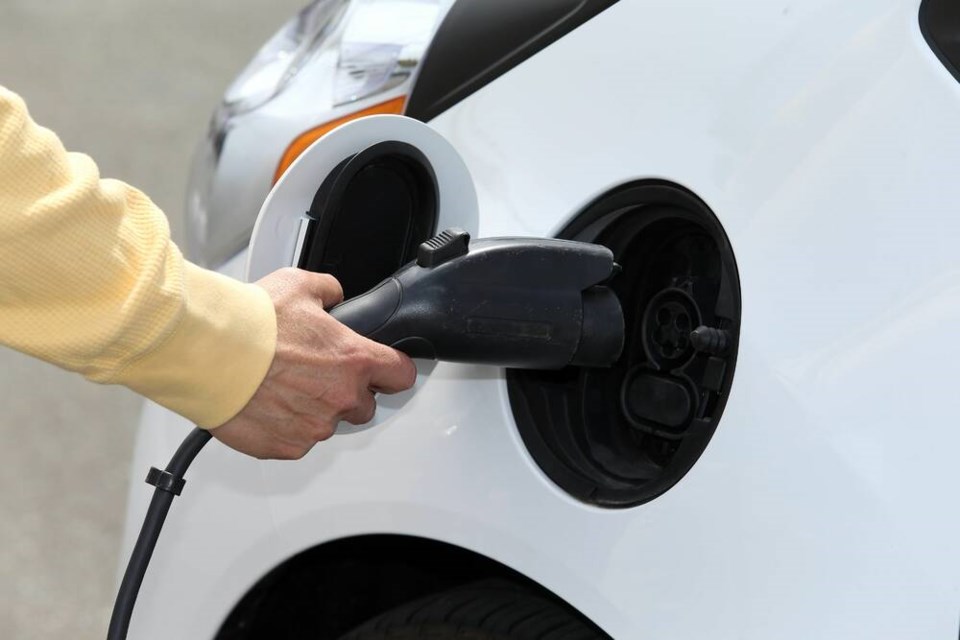As surging gas prices have many considering a switch to an electric vehicle, be warned: North America’s “Green Highway” is still under construction.
The fact that I’m sitting poolside at the Scottsdale, Arizona, condo that will be our home for the next two months (a typical forecast: sunny with a high of 31 C) is proof that it is possible to take an all-electric vehicle on a long-distance road trip.
But not without its challenges. A trip like ours in an all-electric Hyundai Kona from Victoria to Scottsdale (about 2,540 kilometres) required equal parts planning, patience, perseverance, good luck and Siri.
It’s one thing to map out where charging stations are along your planned route, which we did. It’s quite another to find them; find them working; find them working and compatible with your vehicle and find them working, compatible with your vehicle and willing to accept your credit card.
While gas stations are plentiful and well marked along most major roadways, the same can’t be said of EV fast chargers. Highway directional signs are almost non-existent. Most charging stations are tucked away in some corner of a shopping mall parking lot. Those aren’t signed either, almost like planners think that locals who have electric vehicles are the only ones who will be using them.
I made sure to get an American credit card before leaving for use at the charge stations, but we discovered it’s best to download apps to activate the chargers with a phone.
Let me illustrate with just one example some of the problems we encountered: Shortly after we crossed into Oregon we tried to use an Electrify America charging station in a parking lot outside a Target. I couldn’t get the charge station to work. The lady charging her car at the next station said her credit card had been rejected, too. She had used her phone.
I went into the Target (where there was Wi-Fi) to download the app, but it wouldn’t let me load my credit card info (unsecured network be damned, I was desperate) because my postal code wasn’t compatible. A call to the Electrify America toll-free line followed. The woman on the other end was amazingly helpful but she couldn’t take credit card info over the phone.
She suggested returning to the charger to test the card while she monitored the station. The station registered as working on her end but there was still no success with the card. At this point, about 90 minutes after we had pulled into the station, she took pity on me — the ever polite, panicking Canadian senior — and said that the company would on a one-time-only basis charge us up for free.
Ironically, the new guy who had pulled into an adjacent charger said he had to use his credit card because his app wouldn’t work. “They’re quirky,” he said of the stations.
This was not a quick stop for gas. All in all, it took about two hours to find and then get the charge station turned on and then another 45 minutes or so to charge up.
At least it gave me time to call to our bank to have our vacation condo’s address listed as one of the billing addresses on the American Visa I had taken out for the trip. (Once that was done and loaded into the app, charging at the Electrify America stations went off without a hitch.)
Unfortunately, charging stations are not all owned and operated by the same company, and each has its own app. The three we most often encountered were Electrify America, ChargePoint and Evgo.
I had also tried to plan our hotel stops at those with destination EV chargers and came up two out of four. It should be remembered, though, that the destination charging stations offered by many hotels are for Teslas — and Tesla has a proprietary charging system that isn’t compatible with other EVs. Before we left, I bought an adapter that allowed me to use a Tesla destination charger at one hotel. However, no adapter is yet available for Tesla Superchargers (fast chargers).
As we headed further south, either the charging stations got better or we got better finding them and using them. But we had to revise our planned charging stops. Fully charged, our car reports a range of more than 400 kilometres. However, it’s recommended while using a rapid charger, one should charge only to 80 per cent or about 330 kilometres to protect battery life. Cut that down further to give yourself room to move if the charger you’re looking for isn’t there or isn’t working.
So we definitely ended up making more stops than planned. The upside is that with more frequent stops it only took about 20 minutes to top up.
Cost of fuel, Victoria to Scottsdale, was about $80.
Was it worth the headaches? One look at the thousands of cars on the freeways approaching Los Angeles or Phoenix should be more than enough to know that our car-centric society can’t keep doing what we’re doing. It might be a bumpy ride now, but I suspect it will be smoother sailing soon.
Bill Cleverley is a former Times Colonist reporter.



